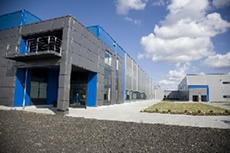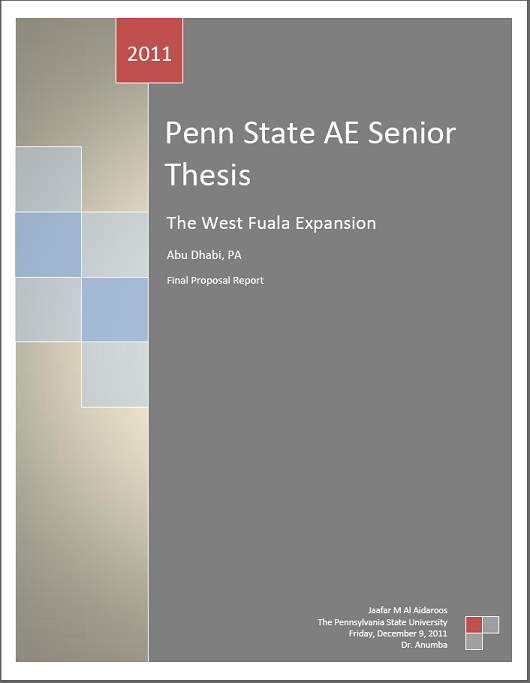Thesis Proposal
This Senior Thesis Final Proposal will demonstrate and breakdown the 4 proposed analyses which will be performed on the West Fuala Plant Expansion. The purpose of these analyses will be to develop and research a more efficient and better design than the original along with studying new sustainable technologies; all these analyses will be conducted within four core requirements: Critical Issues Research, Value Engineering Analysis, Constructability, Review, and Schedule Reduction.
Final Proposal Report
|
Thesis proposal 12/9/2011 |
Thesis proposal Revised 1/13/2012 |
OVERVIEW:
Analysis 1: Feasibility of Incorporating Solar Photovoltaic Systems
Through energy calculations and process equipment requirements; The West plant’s energy consumption is expected to be extremely high. Since the process equipment are custom made where the electric feed/input that cannot be reduced; the only method to reduce energy usage would be to create another sustainable energy source; Hence, the photovoltaic panels. This will reduce the load and the electric usage from the grid. The goal is to be able to power at least one minor system completely and independently in addition to have an early payback period for the panels.
Analysis 2: Structural modification to a Precast Mezzanine
The majority of the West Expansion will be constructed from concrete with the exception of the steel Mezzanine. Having a project entirely from a specific material would be easier and faster to construct; on the other hand, having to build a project with many different types of materials and trades would not. For that reason, the second proposed analyses would be to change the Mezzanine from steel to precast concrete in order to be able to simplify the construction process and be able to save time and cost.
Analysis 3: Changing the delivery method to a Turnkey
Miscommunication and delayed input caused many changes in the project; most of which could have been avoided with a better team structure. And so, the 3rd proposed analysis is determining and evaluating the benefits of changing the delivery method from the current design-bid-build to a turnkey delivery method.
Analysis 4: BIM application – Incorporating Engineering Analysis
BIM has been used throughout the project for clash detection and facilities management purposes. However, there many other benefits and uses of BIM that can greatly benefit the project process and the owner afterwards. For that reason, the final proposed analysis will be determining the benefits of Engineering Analysis when comparing it to the cost applying it.
Breadth Topics
Electrical Breadth: Technical Analysis 1
The electrical breadth will study the practicality of incorporating solar photovoltaic panel into this project in order to generate electricity which would reduce the energy cost and usage from the electrical grid. Calculations will be done to find the most efficient and effective way to place the panels. In addition, calculations will be made to figure out the amount of energy that could be generated along with the upkeep cost.
Finally, the cost implications of installing this system will be analyzed to determine the feasibility and effectiveness of this system.
Structural Breadth: Technical Analysis 2
This breadth will investigate the practicality of changing this structure from steel to a precast concrete system. The analysis will be performed using structural calculations which will show the requirements of switching the system to a precast concrete system. In addition, those calculations will show the dimensions and details of the precast members that will replace the current steel system. This will include all type of load calculations that may affect the mezzanine.
Links
User note:
-
While great efforts have been taken to provide accurate and complete information on the pages of cpep, please be aware that the information contained herewith is considered a work-in-progress for this thesis project. modifications and changes related to the original building designs and construction methodologies for this senior thesis project are solely the
interpretation of britnei godusky. changes and discrepancies in no way imply that the original designed contained errors or was flawed. differing assumptions, code references, requirements, and methodologies have been incorporated into this thesis project; therefore, investigation results may vary from the original design.

